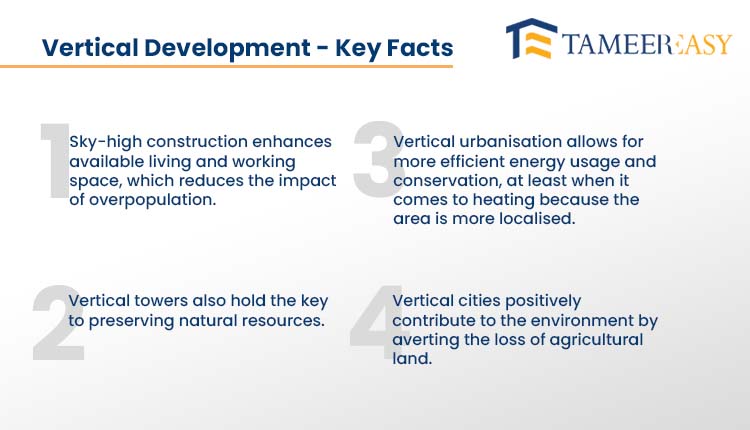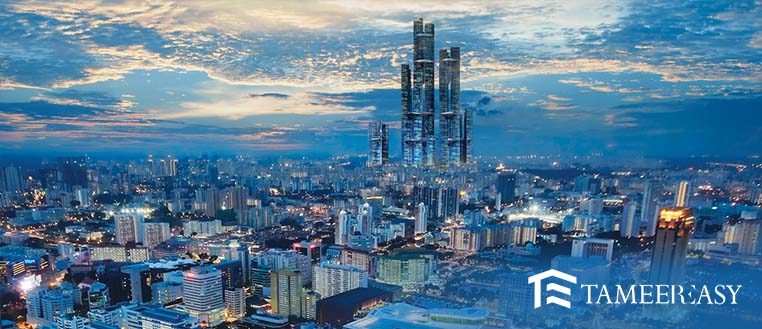Importance of Vertical Development
Lahore, one of the largest and most populous cities in Pakistan, faces a range of complex challenges that require solutions beyond technical fixes. The need for vertical development in Lahore arises because the city has been expanding horizontally, leading to the depletion of green spaces and agricultural lands. This has resulted in an increasing demand for housing, infrastructure, and public services, which is putting a strain on the city’s resources.
Vertical development is the construction of taller building processes in urban areas, which allows for the efficient use of limited land resources. In Lahore, vertical development can help address the housing shortage and reduce the pressure on agricultural land by building high-rise apartments and mixed-use buildings in the city’s central business district and other densely populated areas. This would also reduce traffic congestion and pollution by reducing the need for long commutes.
Furthermore, vertical development can contribute to the city’s economic growth by attracting investment and creating job opportunities in the construction and real estate sectors. It can also boost the tourism industry, as taller buildings can offer panoramic views of the city’s historical landmarks.
However, it should be planned and executed carefully, considering the environmental impact, infrastructure requirements, and community needs. The city authorities must ensure that the construction adheres to safety standards and regulations.
Overview of Vertical Development in Pakistan
Pakistan, like many other developing countries, needs to catch up in vertical development due to various factors. One of the primary reasons is the need for more planning and infrastructure to support high-rise buildings. The country’s cities are overgrowing, but the development has been primarily horizontal. It is leading to a shortage of land and urban sprawl.
The country’s building codes and regulations need to be updated and enforced strictly, leading to unsafe and substandard construction practices. Political instability, corruption, and lack of government oversight have also hindered investment in the construction and real estate sectors.
The need for more financing options and access to capital is another primary reason for Pakistan’s slow pace of vertical development. The country’s banking sector has been reluctant to provide long-term loans for real estate development, and the country’s security concerns often deter foreign investors.
According to a report by the World Bank, Pakistan has one of the lowest ratios of high-rise buildings per capita in South Asia, with only 200 high-rise buildings in the country, compared to over 7,000 in India. Furthermore, only 2% of Pakistan’s population lives in apartments, compared to 30% in India and 60% in China.
Vertical development has also contributed to the country’s need for more affordable housing. The majority of the population lives in informal settlements or slums, with limited access to essential services such as water, sanitation, and healthcare.

Benefits of Vertical Development in Lahore
1. Efficient Land Use
Vertical development allows for the efficient use of limited land resources in a city. Lahore, one of Pakistan’s most populous cities, has limited land available for development. Building high-rise apartments and mixed-use buildings in densely populated areas can help address the housing shortage and reduce the pressure on agricultural land, essential for the city’s sustainability.
2. Reduced Traffic Congestion
Lahore’s horizontal expansion has led to increased traffic congestion and pollution, which has harmed the quality of life of its citizens. Vertical development can reduce traffic congestion by bringing people closer to their workplaces, reducing the need for long commutes. This would also decrease the burden on the city’s infrastructure, such as roads, underpasses and bridges.
3. Economic Growth
Vertical development can contribute to the economic growth of Lahore by attracting investment and creating job opportunities in the construction and real estate sectors. The construction of high-rise buildings can also boost the tourism industry, as they offer panoramic views of the city’s historical landmarks.
Conclusion
In conclusion, the need for vertical development in Lahore is crucial for the city’s sustainable growth, and it should be pursued in a responsible manner, with the participation of all stakeholders.


